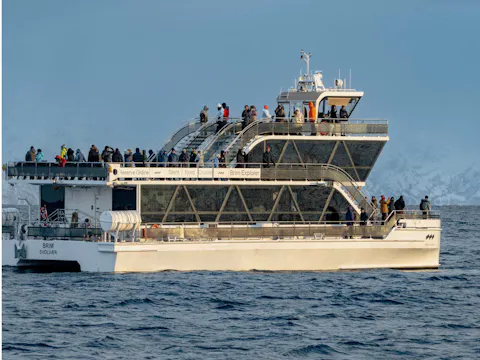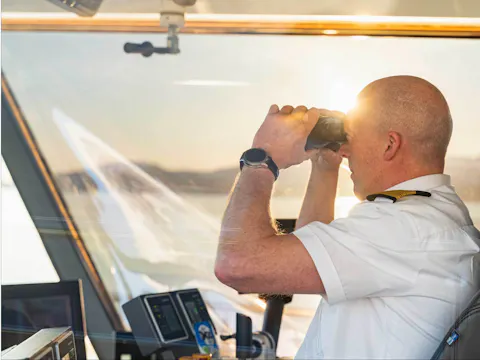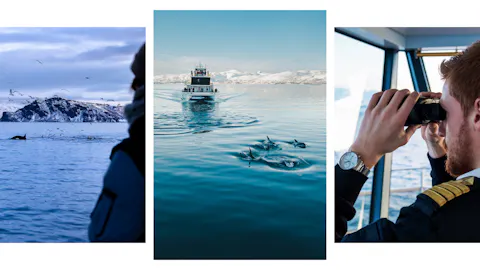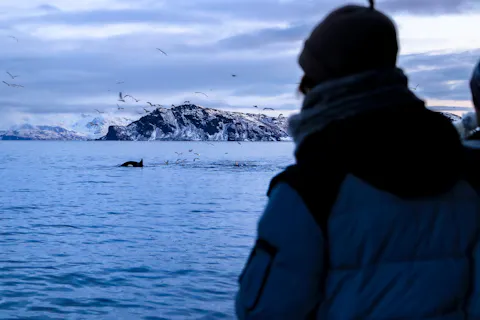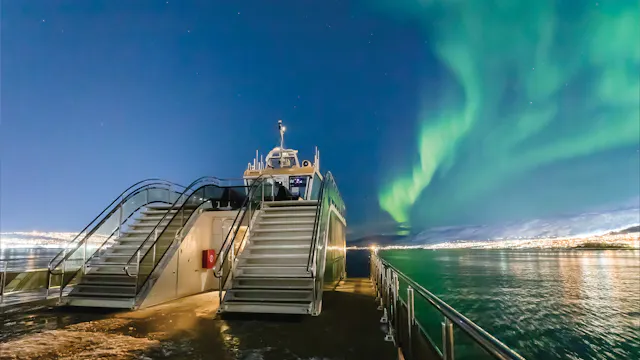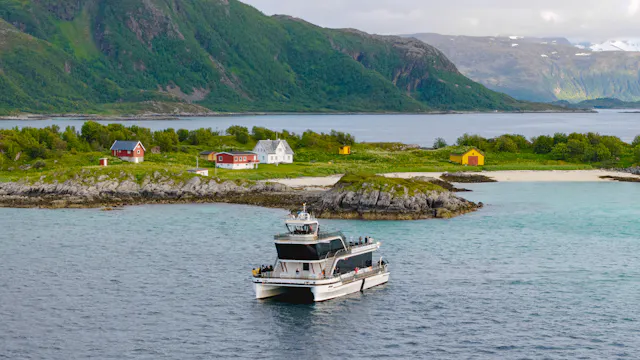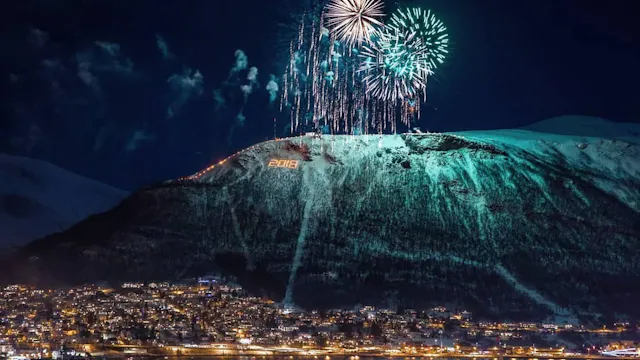In order to be successful at whale watching, we use a number of methods and tricks to find the whales. The most famous is probably to watch the whale blow. This is the sea spray that the whale blows up over the water crust when the whale comes to the surface to breathe. For the trained eye, you can also determine the species of whale based on how the spray looks. For the trained nose, you can even distinguish the species of a whale by the smell of their blow! More commonly though, is to recognise if it is a Fin whale, sperm whale, humpback whale or an Orca by the dorsal fin. The killer whale (Orca), has a prominent black fin that is easily recognisable, while the Humpback whale has a smaller dorsal fin further back on the body.
If the weather is quiet, you can sometimes even hear the sound of the blow. Weirdly enough, it sounds similar to the sound of a person blowing water out of their mouth.
Another, easier way of spotting where whales might be, is the presence of birds such as the seagulls. They feed on the herring that are pushed to the surface by the whales working together to feed. Since herring is also a common source of food for us, we work together with the herring fishing boats to gather information on where the whales have been spotted most recently.

